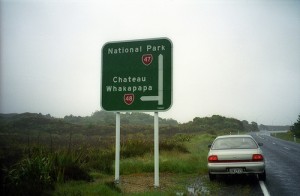Car Rental
 Driving in New Zealand is one of the best ways to explore the country. As a matter of fact, the roads are in an excellent condition due to the many investments done in the infrastructure. Statistically, travelers from Australia and UK would rather rent a car than use public transport to travel around the country. Compared to international standards, the traffic in New Zealand is low.
Driving in New Zealand is one of the best ways to explore the country. As a matter of fact, the roads are in an excellent condition due to the many investments done in the infrastructure. Statistically, travelers from Australia and UK would rather rent a car than use public transport to travel around the country. Compared to international standards, the traffic in New Zealand is low.
The common legal age to rent car in New Zealand is 21 years old. You can legally drive in New Zealand for up to 12 months if you have either a driver’s licence from your home country or an International Driving Permit (IDP). If your current licence is not in English, you must bring an English translation with you. If you stay for longer than a year, you are required to convert to a New Zealand licence.
Prices and Cars
You will need something small to get around town so the compact cars are the best choice. However, if you plan to drive from one city to another and explore the outdoors, it’s best to choose something bigger, like a full size car.
Whenever you rent a car in New Zealand you are covered by Standard Vehicle Insurance. Of course, optional insurance upgrades are available. Remember that it’s practically impossible to rent a car in New Zealand if you don’t have a credit card.
Renting a car in New Zealand can be quite expensive compared to Europe, for example. However, it usually turns out to be cheaper than using the public transport especially since the car rental companies have plenty of hot deals for travelers. The more days you rent the car for, the cheaper the daily rate will be. So if you rent a compact car in Auckland for a week, the base daily rate starts at $48NZ. Prices vary slightly from one city to another.
Some of the car rental companies in New Zealand include:
Hot Deals !
Driving in New Zealand
New Zealanders drive on the left-hand side of the road. Drivers give way to all traffic crossing or approaching from the right. There is no left turn rule as in North America. The speed limit is 100km/h on the open road and 50km/h in urban areas. Signposts follow the international symbols. All distances are in kilometers (km).
Both drivers and passengers must wear a safety belt whether they stay in the front seats or the back seats. Children under five must be properly restrained by an approved child restraint.
Some important signs and their meanings:
- STOP: you must stop and give way to the traffic approaching from the right or left
- GIVE WAY: slow down. Stop if traffic is approaching and give you to the traffic coming from the left or right; including the traffic from the opposite direction if you are turning left.